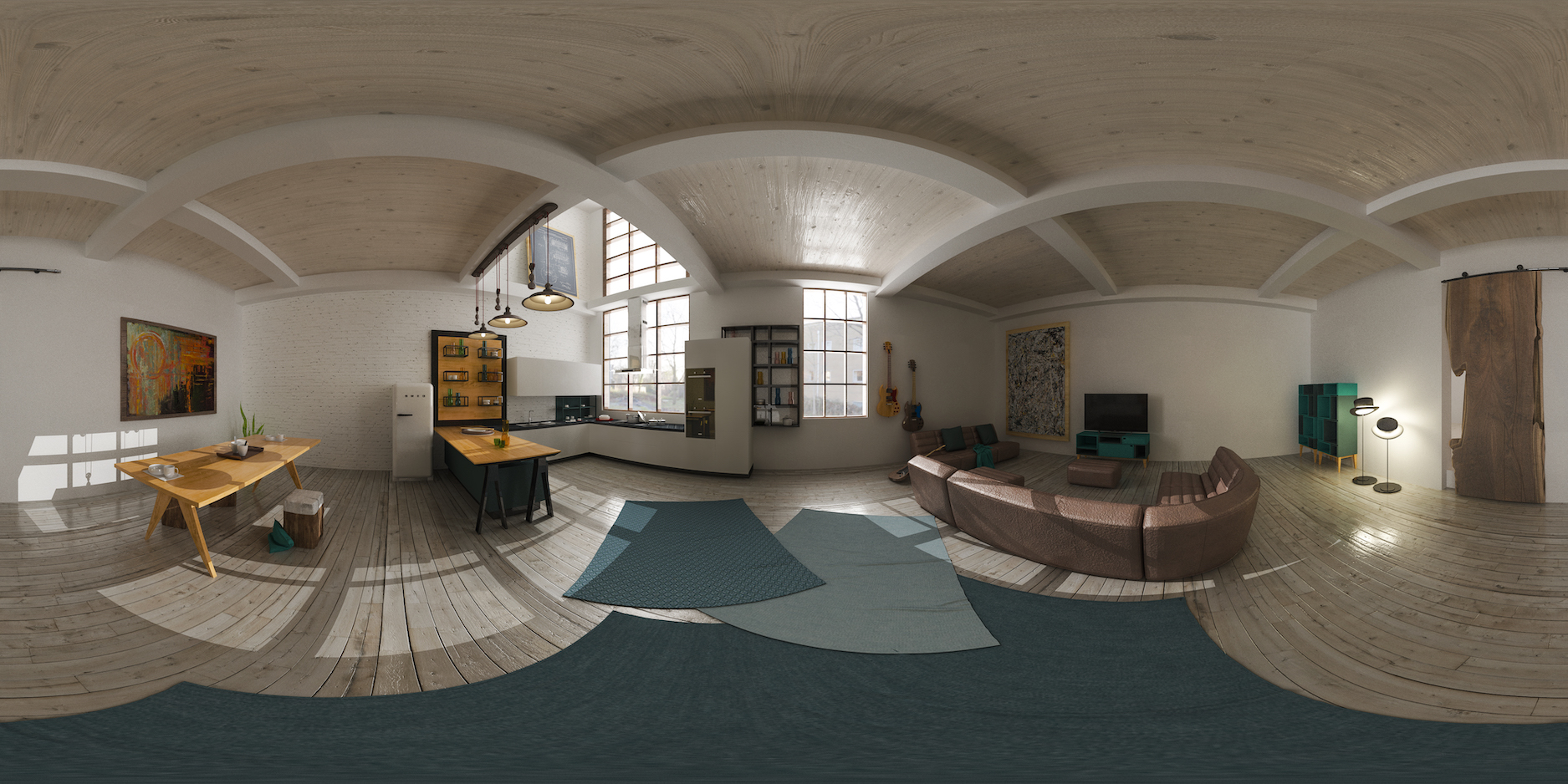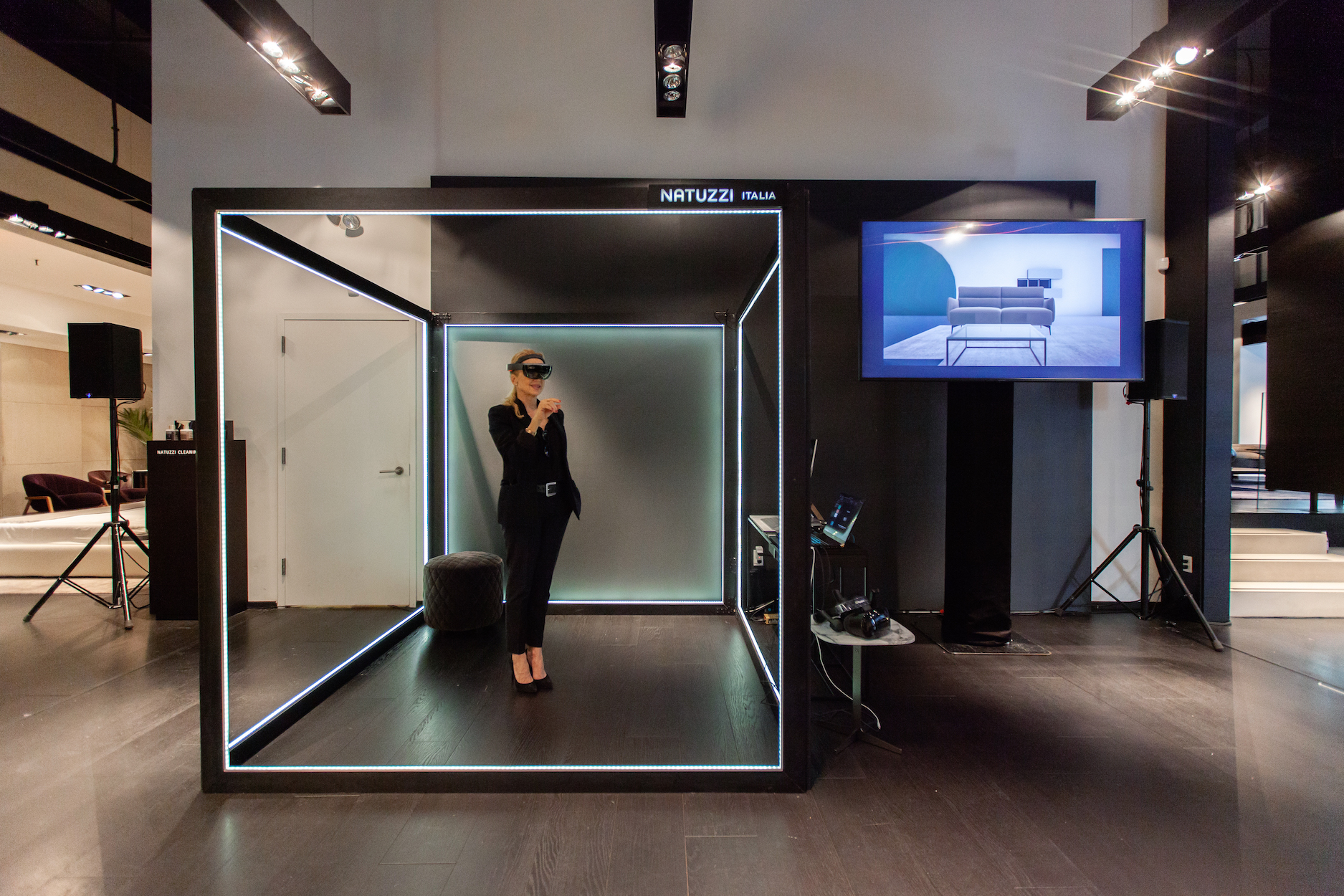The blurring of the physical and digital worlds is becoming a trend in retail experiences—and Natuzzi is looking to bring both of these trends into focus. The Italian furniture brand recently announced a partnership with Microsoft where it will introduce the HoloLens 2, a virtual reality platform designed to help increase in-store sales. “I put myself into the consumer’s perspective and realized that it can’t be static,” says Pasquale Junior Natuzzi, the creative director at Natuzzi. “I wanted to make it more playful, more dynamic in terms of what the path to purchase is.”
The HoloLens 2 has the appearance of video game console complete with a padded headset that projects an alternate reality. But unlike, say, Middle Earth or another mystical land, this platform is homebound. Natuzzi aims to improve the physical retail experience by putting consumers in a digital showroom filled to the brim with all of its living room, bedroom, and kitchen products. Here, clients can juxtapose furniture and see first hand if it fits into a floor plan. Think “The Sims,” but in 3-D. Not only does this allow for a concise way for picking the right product for a given space, it also allows the brand to offer a greater selection while consolidating the square footage of a store. Additionally, Natuzzi will have an augmented reality component, where a visor will project holograms of pieces onto a clients home space. 360-degree renderings will also provided, and can be explored on a mobile device.



